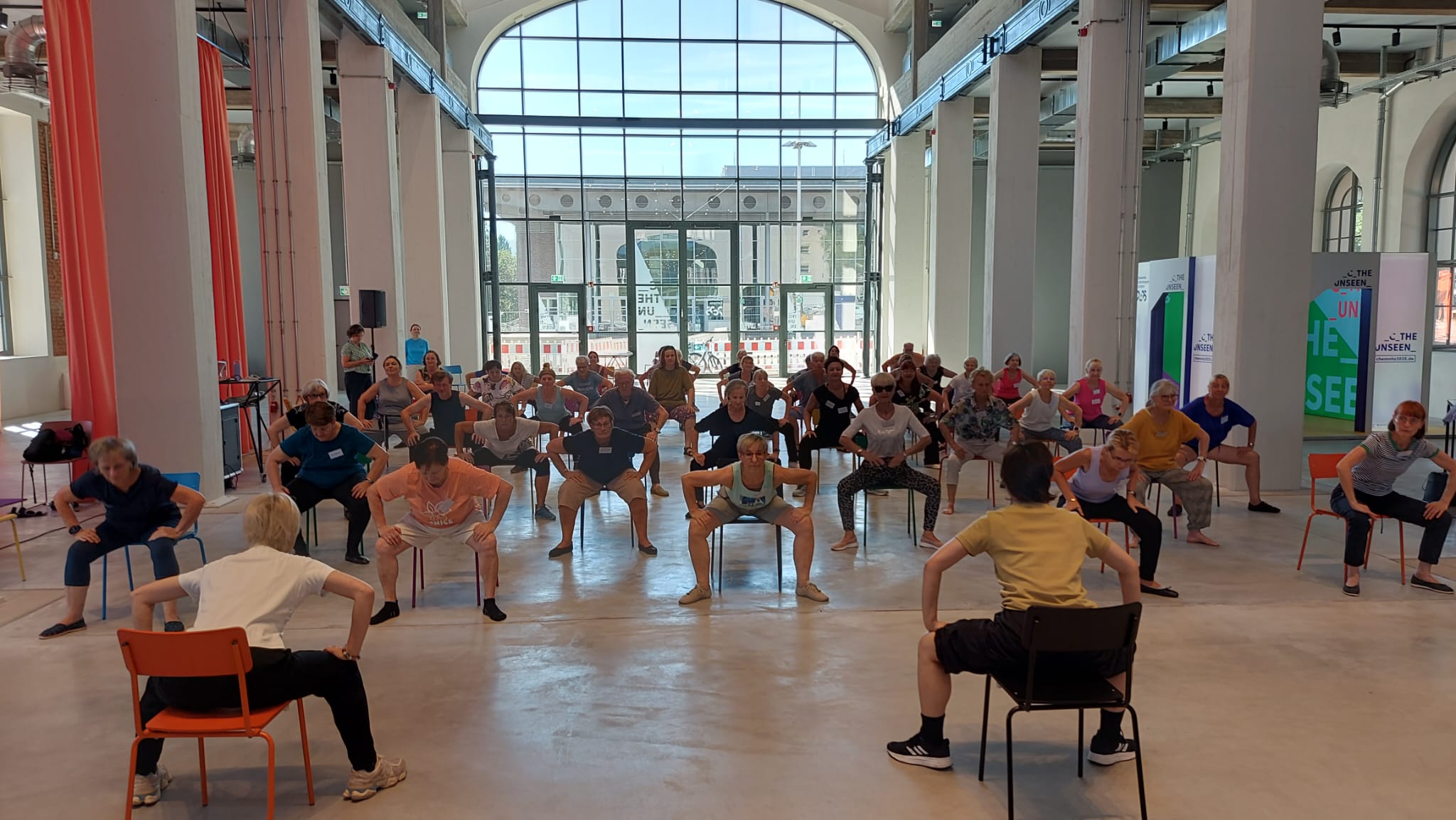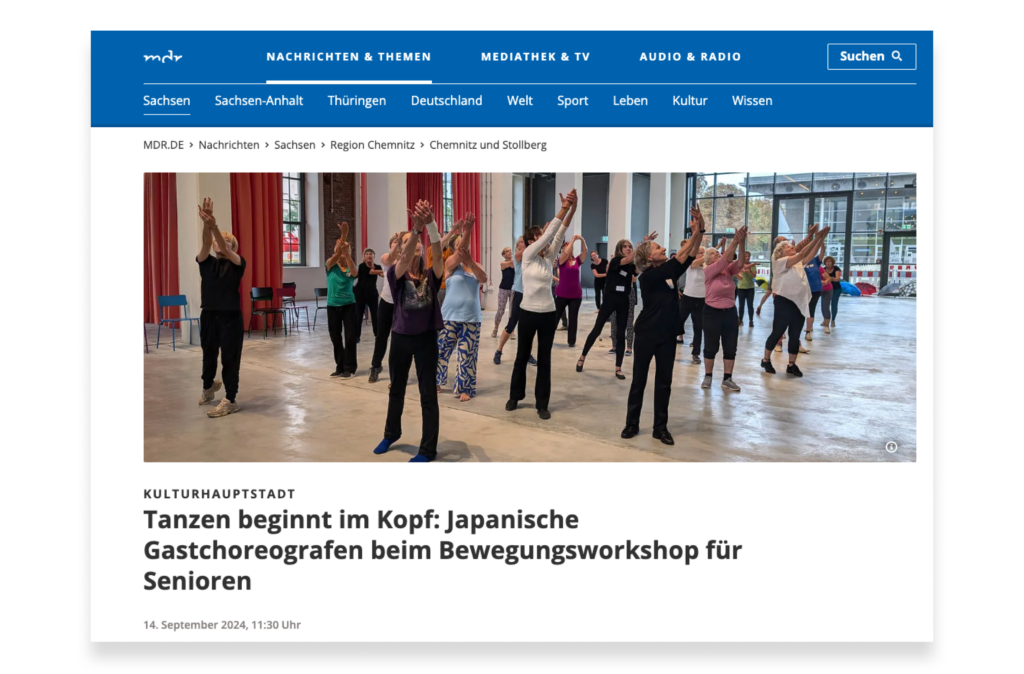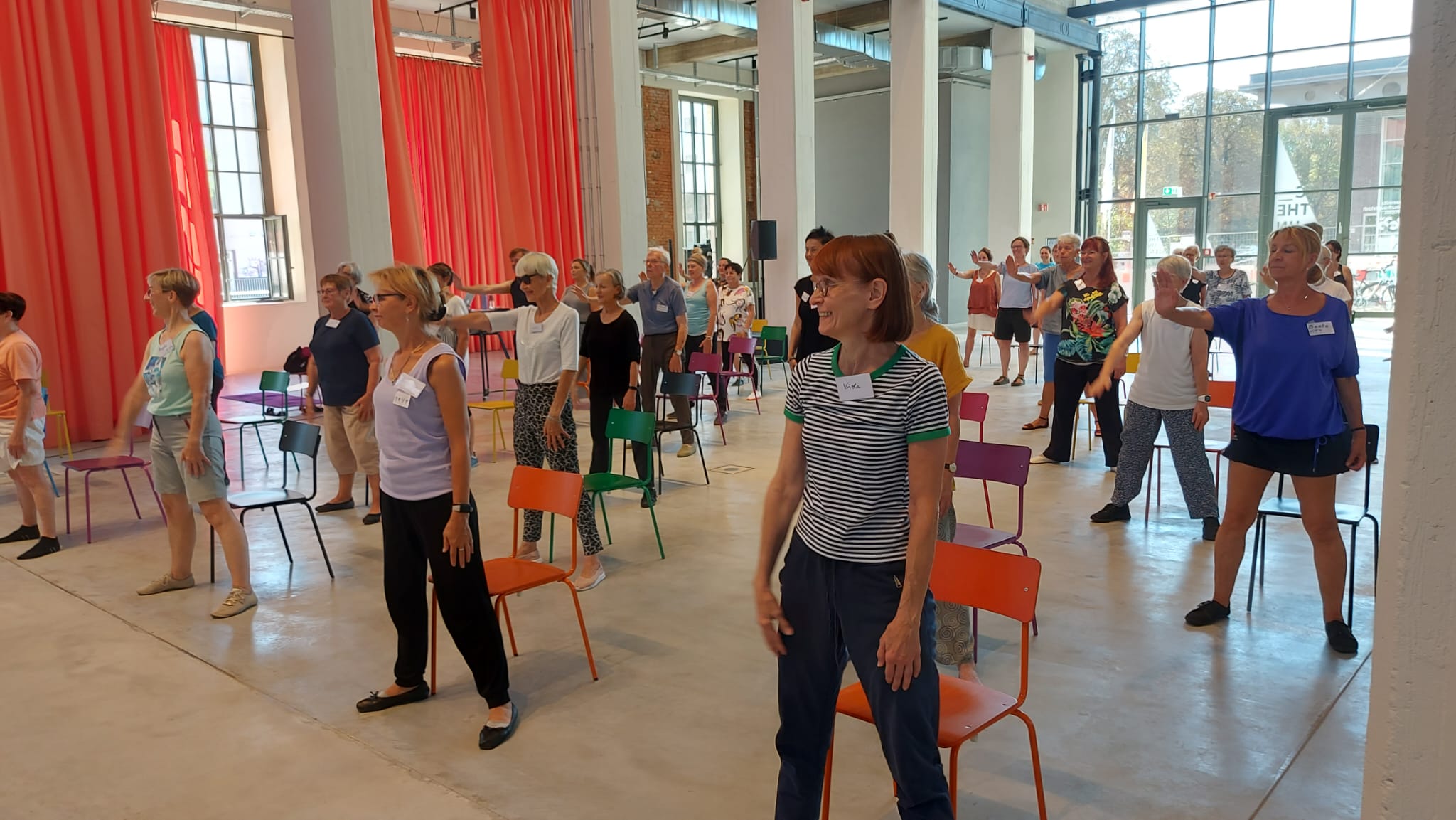
Tanzende Nachbarn
A Dance Project for All Generations
As part of Chemnitz 2025, the European Capital of Culture, the “Dancing Neighbors” project brings together people of different age groups and cultures through the universal language of dance. Initiated by the Team Generation, the program specifically targets older individuals, offering weekly dance classes that promote physical presence and mobility.
Currently, 90 seniors participate in the classes held at the Hartmannfabrik, while another weekly dance class is offered by the ballet of the Theater Chemnitz. Terry Pedersen Pfeiffer, a former ballet dancer with extensive experience in dance education, emphasizes the importance of moving together: “We move together. That’s what it’s about. And that means we first mobilize our bodies. We learn to breathe and stand steadily.” Her courses focus on posture, breathing, and social interaction to foster holistic well-being for participants.
A special highlight of the project are the three intensive workshops conducted in collaboration with Japanese choreographers Yoko Ando, a former dancer of the world-renowned Forsythe Company, and Ryu Suzuki, a dancer and choreographer at Dance Base Yokohama. The first of these workshops took place in late May 2024 at the Hartmannfabrik, attended by 60 older people from Chemnitz. The second five-day intensive workshop followed in early September 2024.
These workshops represent an intercultural exchange, focusing on artistic collaboration between the Japanese guests and the Chemnitz participants. The Japanese expertise, especially in dealing with an aging population, is a valuable contribution to the project. In Japan, where the demographic shift toward an older population is advancing faster than in Germany, there are already extensive participatory programs for older adults. These experiences played a significant role in shaping the workshops, which aim to keep older people active and healthy through dance.

The collaboration with Dance Base Yokohama is expected to continue beyond the three planned intensive workshops and to be established in the long term. The goal is to foster a close partnership between Chemnitz 2025 and the Tanz | Moderne | Tanz Festival under the direction of Ballet Director Sabrina Sadowska. A joint performance is already planned for the opening of Chemnitz 2025 on January 18, 2025, followed by several more performances throughout the Capital of Culture year. Alexandra Takats and Michal Sandor from the Chemnitz 2025 program team report overwhelmingly positive feedback: “One important comment from the participants was that they felt the interaction with the two professional dancers was an exchange on equal footing, and they quickly realized how this shared activity could also foster a sense of community.”
The workshops and dance classes allow participants to learn new forms of movement, make social connections, and actively participate in community life. The guiding principle is that dance connects people – regardless of age, experience, or background. A joint performance of the various groups is already planned for the opening of Chemnitz 2025, which will be a highlight of the Capital of Culture year.

Supported by the EU-Japan Fest Committee, the project is not only locally but also internationally backed, highlighting the importance of international collaboration for cultural exchange. The “Dancing Neighbors” project demonstrates how dance can be used as a unifying element to bring together people of different cultures and generations, keeping them moving together.
Terry Pedersen Pfeiffer concludes: “We want to show participants how they can adapt movements despite physical limitations. Our courses are designed so that everyone can participate, regardless of individual conditions. The social aspect is just as important as the physical movement.” With this holistic approach, “Dancing Neighbors” makes a significant contribution to promoting the well-being and social integration of older people in Chemnitz.
For more information, visit the Chemnitz 2025 website.
Images: Peter Rossner, Tarah Pfeiffer, Michal Sandor, Terry Pedersen Pfeiffer

TANZbüro and the association TANZ | MODERNE | TANZ e.V. is supported with funding from the Cultural Foundation of the Free State of Saxony, funds from the municipal art and culture promotion of the City of Chemnitz, as well as funds from the Capital of Culture budget.